As the MitraClip procedure becomes more available to hospitals it is imperative that sonographers understand the goals of the transthoracic echocardiogram prior to the MitraClip procedure. In this blog we will review the 7 components for a complete MitraClip echo protocol.. In past blogs we have outlined how to asses and quantify mitral valve pathology and mitral regurgitation, including step by step guides for PISA and other MR quantification methods. If you need a refresher, check out past articles here:
- Smart Strategies for Determining MR Mechanisms
- A complete guide to performing MR PISA
- Essential Steps to Evaluating MR Etiology
- 3 Doppler Techniques for Evaluation of MR
- 3 Essential Color Doppler Measurements for MR
- Volumetric Method: A third method for evaluating MR severity
- 3 Steps to Quantifying MR via Stroke Volume Method
INDICATION FOR THE MITRACLIP
Abbott states the indication for use of the MitraClip as follows: “The MitraClip Clip Delivery System is indicated for the percutaneous reduction of significant symptomatic mitral regurgitation (MR ≥ 3+) due to primary abnormality of the mitral apparatus [degenerative MR] in patients who have been determined to be at prohibitive risk for mitral valve surgery by a heart team, which includes a cardiac surgeon experienced in mitral valve surgery and a cardiologist experienced in mitral valve disease, and in whom existing comorbidities would not preclude the expected benefit from reduction of the mitral regurgitation.”
MitraClip
For those less familiar with the MitraClip it is a
7 COMPONENTS FOR A COMPLETE ECHO PROTOCOL
The seven components of a complete echo protocol are:
- Determine if MR is degenerative or functional
- Quantify MR severity
- Assess Pulmonary Veins for flow reversal
- Calculate MV Area and Mean Pressure Gradient
- Quantify LV Size and Function
- Quantify LA Volume
- Rule Out other Valvular Disease
1. DETERMINE IF MR IS DEGENERATIVE OR FUNCTIONAL
Because the MitraClip is indicated for the reduction of significant mitral regurgitation for patients with degenerative [primary] MR one of the main goals of the echocardiogram for potential MitraClip patients is to identify if the valve has degenerative or functional disease. Degenerative MR is also called Organic and/or primary MR. This basically means that the valve itself is the cause of the regurgitation. With degenerative MR the regurgitation is due to abnormalities of the mitral leaflets versus abnormalities caused by the left ventricle. The MitraClip is indicated for severe degenerative disease. Some examples of severe degenerative MR include:
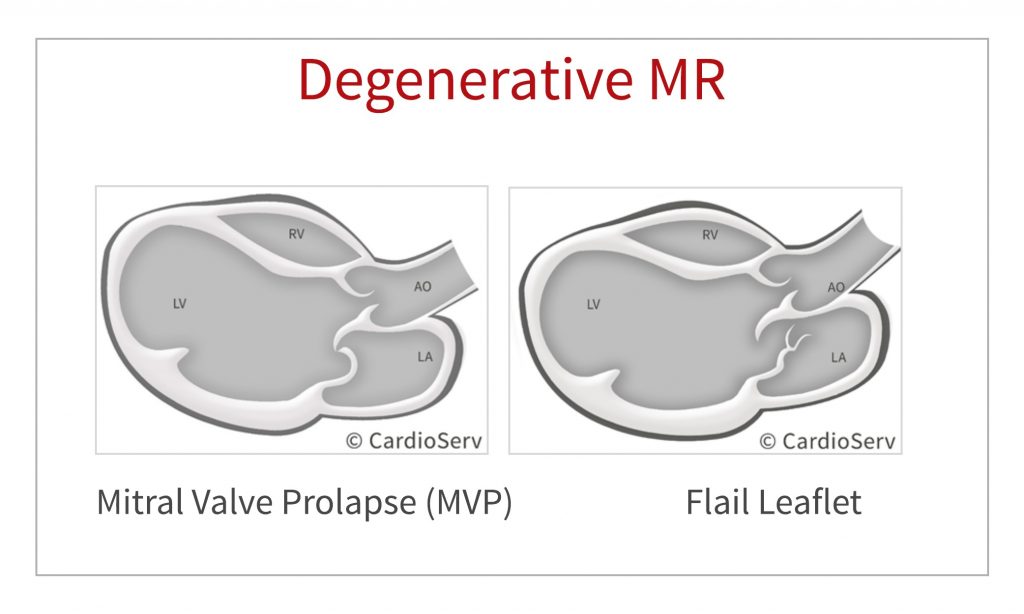
Evaluating the mitral valve includes documenting how calcified the valve is. The MitraClip is not able to be deployed on severely calcified leaflets. Even small areas of calcification Look for small areas of calcification that may be missed
When reporting on mitral valve disease remember to identify the leaflet and the scallop. Here is a cheat sheet to help you remember which scallop is visualized in each of the major echo views:
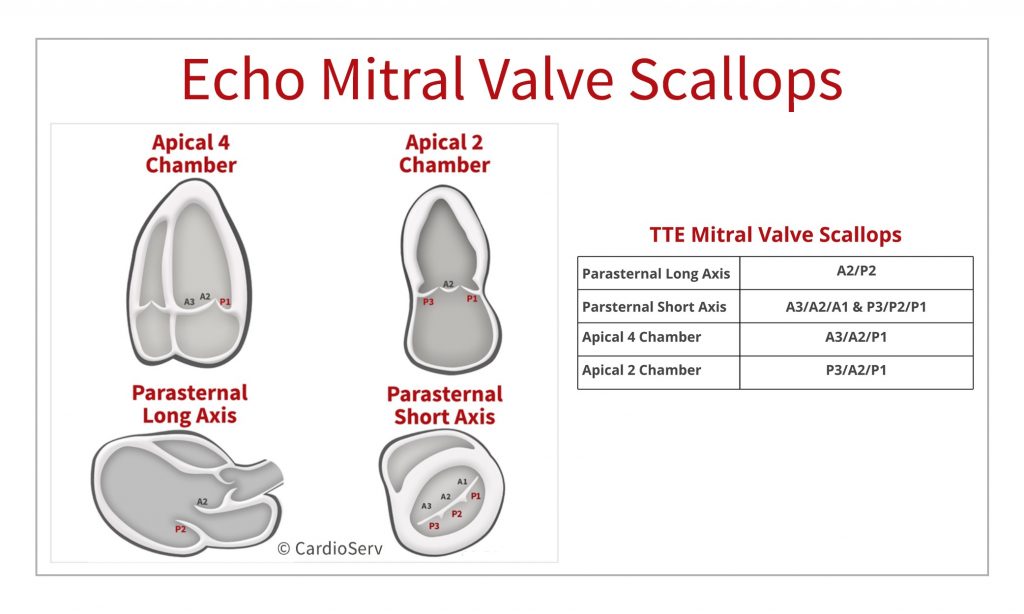
QUANTIFY MR SEVERITY
The MitraClip is used to reduce significant MR. All patients that may be a candidate for the MitraClip procedure must have a complete quantitative assessment of the mitral valve to include PISA. Review A complete guide to performing MR PISA. Markers for severe MR include both Doppler quantification and other markers such as an enlarged left ventricle, moderately to severely enlarged left atrium and pulmonary hypertension.
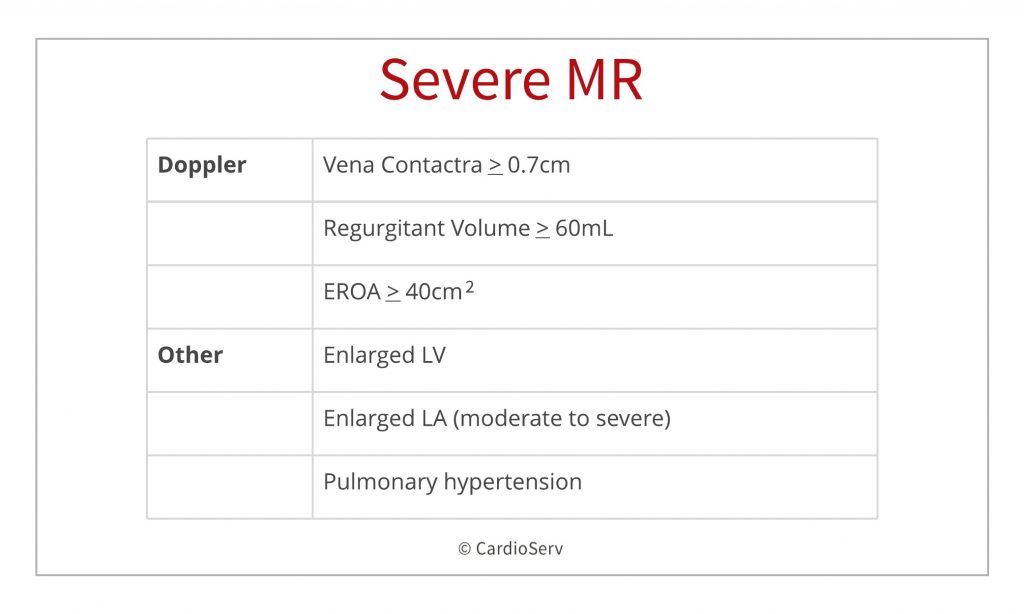
3. ASSESS PULMONARY VEINS FOR FLOW REVERSAL
Flow reversal in the pulmonary veins has a greater than 85% probability of severe MR. Always evaluate the pulmonary veins for flow reversal when performing a MitraClip echo scanning protocol.
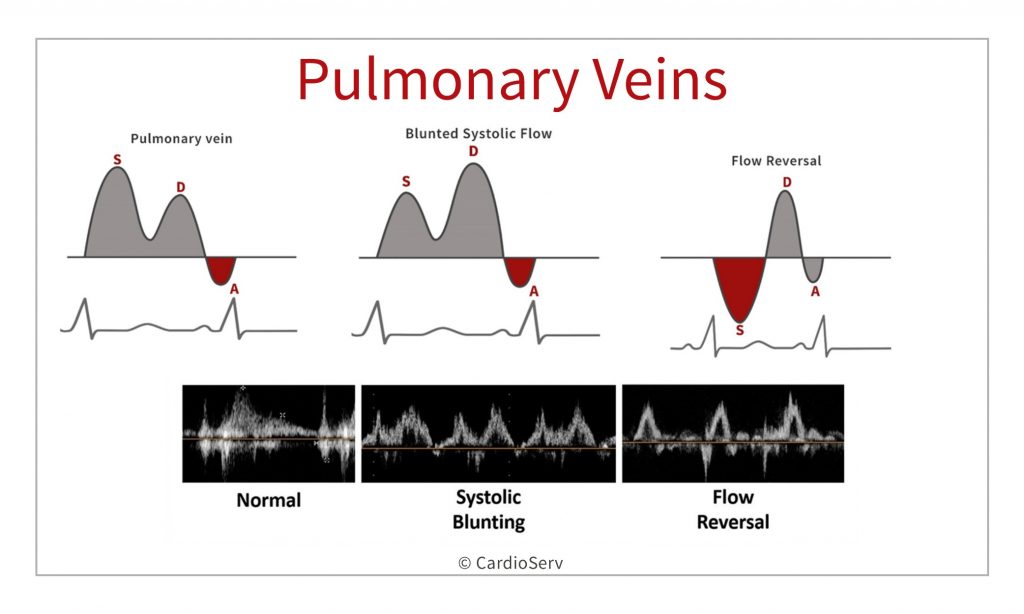
4. CALCULATE MITRAL VALVE AREA AND MEAN GRADIENT
Because the MitraClip will decrease the area of the mitral valve it is essential to obtain a pre-clip mitral valve area (MVA). A complete assessment of the MVA will include obtaining CW through the MV and obtaining a mean pressure gradient and calculating the MVA. The P1/2t formula is the recommended method for calculating the MVA.
- Mean Pressure Gradient – trace CW Doppler – flow dependent
- MVA – Measure P1/2t – independent of flow and gradient
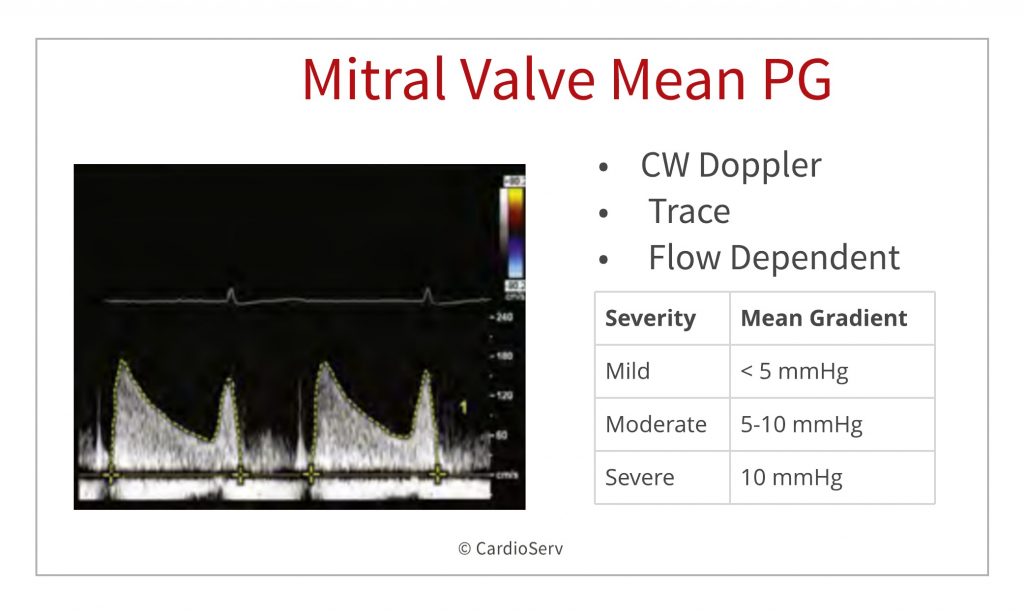
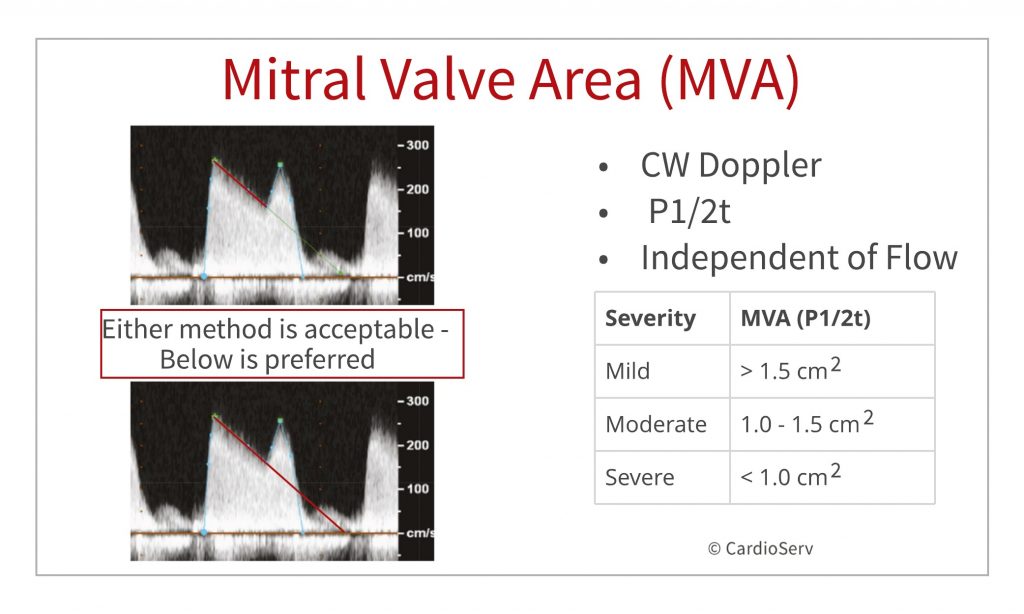
5. QUANTIFY LV SIZE AND FUNCTION
It’s necessary to evaluate the size and function of the left ventricle. Focus on quantitative rather than qualitative (eye-balling). The best practice is to perform the biplane Simpsons measurement to obtain an LV volume and ejection fraction.
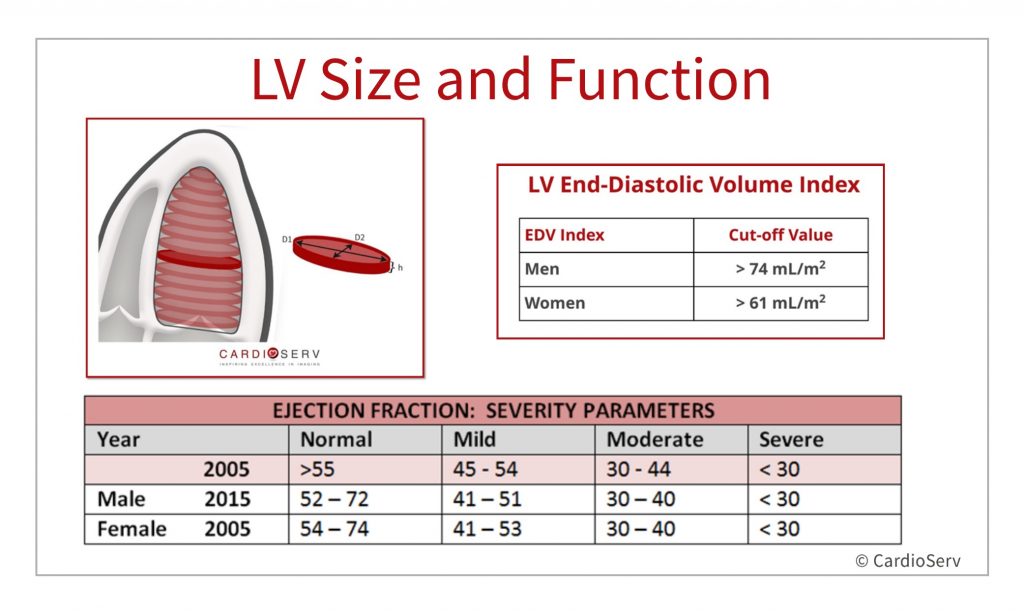
6. QUANTIFY LA VOLUME
7. Rule Out Other Valvular Disease
MITRACLIP PRE-DIAGNOSTIC ECHO MEASUREMENTS
- Functional vs degenerative
- Document leaflet prolapse
- Document leaflet flail
- Severity of MR
- PISA
- EROA
- MR VTI
- Mitral Valve mean diastolic gradient
- Mitral Valve Area
Left Heart:
- Ejection Fraction / LVF
- LA Size
Other Valvular Disease
- TR: Severity if any
- AS: Severity if any
- AI: Severity if any
POST MITRACLIP ECHO: DAY 1 & DAY 30
Be sure to perform a complete echocardiogram and include the following:
- MR severity
- EROA (cm2) (If one still present)
- Mean Mitral Gradient (mmHg)
- Mitral Valve Area





